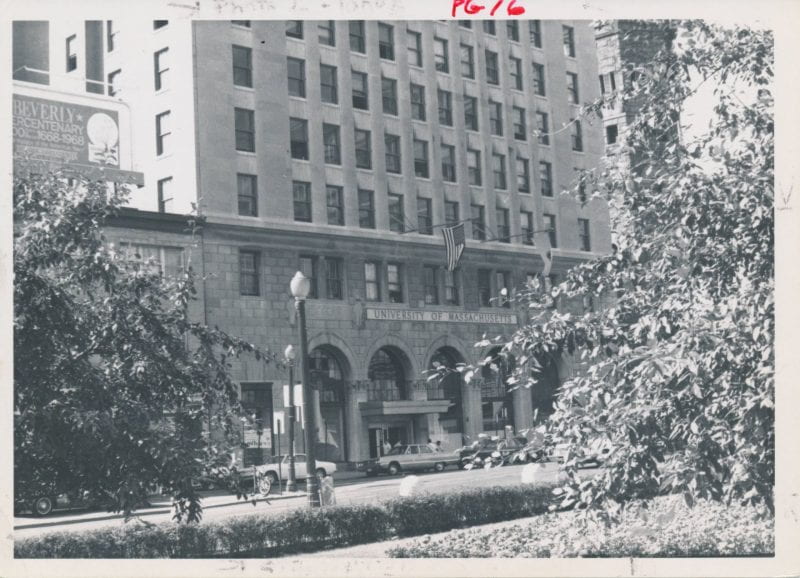Author: Amanda McKay, Archives Assistant and graduate student in the English MA program at UMass Boston
The Mass Media is UMass Boston’s only independent student-run newspaper. In print since 1966, the newspaper aims to publish “a reliable, relevant and factual paper every week” (The Mass Media 2025). UMass Boston’s Founding Day Convocation ceremony took place in December 1966. This date aligns with the newspaper’s founding, making the newspaper a strong part of UMass Boston’s history. University Archives and Special Collections houses copies of past issues of the newspaper. Issues ranging from 1966 to 2011 are digitized and available through the Open Archives website, and more recent editions are available on the Mass Media website. As a student and active member of the UMass Boston community, diving deep into past issues is very interesting and reveals a lot about UMass Boston’s students, faculty, campus, and culture as a whole.

One interesting section from the first issue of the newspaper is the “Letter to the Editor” section, allowing students and faculty to get the word out about something important. In this issue, a library worker sent in a letter regarding students leaving unattended items in the library in order to reserve a study spot while they go somewhere else. This issue also features advertisements from local businesses and organizations, showcasing how the newspaper not only connects UMass Boston students to each other, but also to the surrounding community of Boston as a whole. The image below shows an advertisement for the Charles Playhouse in Boston. By including advertisements like these, the newspaper allowed for students, especially those new to the area, to get acquainted with Boston, while also supporting local organizations.

Looking at more recent editions of the newspaper, it is clear that The Mass Media’s vision and dedication to the community has stayed strong and consistent. In Volume 59, Issue 15 from April 2025, articles highlight world and local news as well as aspects of student culture and events. Now there is even a humor and puzzle section, allowing readers to connect with the newspaper in different ways. As a student here at UMass, I have a deep appreciation for the commitment to honesty and integrity in reporting by our student newspaper. Be sure to pick up the most recent copy of The Mass Media at any time by visiting the newsstands throughout campus, or by visiting The Mass Media’s website. Email library.archives@umb.edu for an appointment to view the collection in person at Healey Library, or visit Open Archives to view the issues virtually.

References:
“About.” The Mass Media. Accessed August 8, 2025. https://umassmedia.com/about.
“Mass Media Student Newspaper Collection.” University Archives and Special Collections, Joseph P. Healey Library, University of Massachusetts Boston. Accessed August 8, 2025. https://openarchives.umb.edu/digital/collection/p15774coll18.
“Print Archive.” The Mass Media. Accessed August 8, 2025. https://umassmedia.com/category/pdf-archive.
“The University of Massachusetts Boston.” Wikipedia. Accessed August 8, 2025. https://en.wikipedia.org/wiki/University_of_Massachusetts_Boston.
University of Massachusetts Boston, The Mass Media newspaper collection, UAPUB-0008. University Archives and Special Collections, Joseph P. Healey Library, University of Massachusetts Boston. Accessed August 8, 2025. https://archives.umb.edu/repositories/2/resources/456.
























